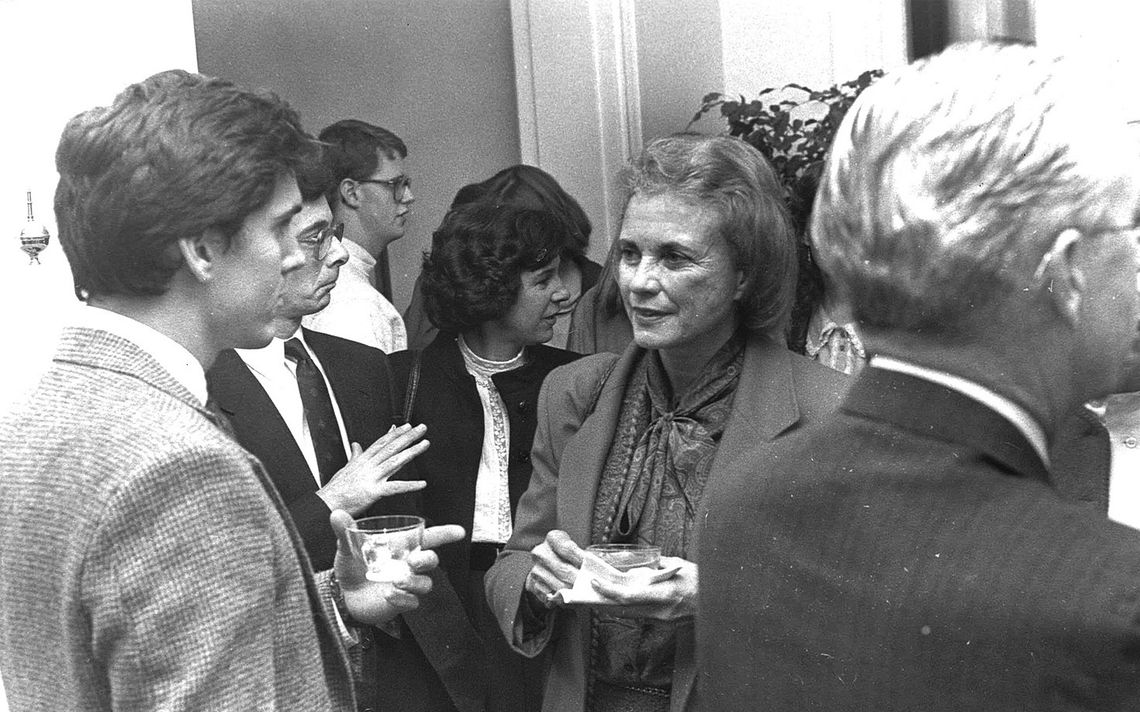When Sandra Day O’Connor served on the U.S. Supreme Court from 1981 to 2005, moderates held sway on the divisive issues of the day, with O’Connor providing the decisive vote on numerous 5-4 decisions, prompting many to label it the “O’Connor court,” even though she never held the role of chief justice. She was seen by many at the time as “the most powerful woman in the world.” Her vote was decisive on a multitude of critical issues, from abortion to affirmative action to the separation of church and state.
Moderation is no longer a term we associate with the highest court in the land. More often than not, the court these days has a 6-3 majority that rules on the conservative side of most issues, with the most obvious example being the decision last year to strike down the right to abortion that was established in 1973 with “Roe v. Wade.” Although O’Connor entered the court as a critic of “Roe v. Wade,” she nevertheless provided the decisive fifth vote in a couple of key cases that preserved the basic right to abortion in the first trimester of pregnancy for at least another full generation.
O’Connor, who died Dec. 1 at age 93, is, of course, best known as the first woman to serve on the U.S. Supreme Court, having been nominated in 1981 by President Ronald Reagan. She graduated near the top of her class at Stanford Law School, where she was a classmate of Chief Justice William Rehnquist. A self-described “cow girl” who was raised on a cattle ranch in Arizona, O’Connor was a trail blazer who made a name for herself in Arizona Republican politics. She was the first woman majority leader in a state legislature when she was elected to that role in the Arizona state senate.
O’Connor wrote the majority opinion in “Grutter v. Bollinger” in 2003 that upheld affirmative action in admissions at the University of Michigan Law School. “Affirmative action’s benefits are not theoretical, but real,” she wrote for the 5-to-4 majority, according to The New York Times. She explained her reasoning: “Effective participation by members of all racial and ethnic groups in the civic life of our nation is essential if the dream of one nation, indivisible, is to be realized.” This ruling, alas, was overturned by the current court earlier this year.
In a 2005 ruling deemed to delineate the separation of church and state, O’Connor joined a 5-4 majority in the case, “McCreary County v. American Civil Liberties Union,” that invalidated the display of copies of the Ten Commandments in Kentucky courthouses. In a concurring opinion, she wrote, “Those who would renegotiate the boundaries between church and state must therefore answer a difficult question: Why would we trade a system that has served us so well for one that has served others so poorly?”
O’Connor’s devotion to her role as an associate justice could be seen, according to Nina Totenberg of National Public Radio, in her perseverance through an arduous bout with breast cancer in the late 1980s. “For a year, she wore a wig, looked drained and wan, but never missed a court day,” reported Totenberg last week. The day before she underwent surgery for breast cancer, in October of 1988, O’Connor made a visit to Washington and Lee University. “A Conversation with Sandra Day O’Connor” was held in the Moot Court Room at Lewis Hall that day and she delivered the Elizabeth Lewis Otey Lecture that evening at Lee Chapel.
In a commentary for The New York Times last week, Patti Davis, daughter of Reagan, pointed out an aspect of O’Connor’s legacy that she shares with the president who appointed her. Both announced their departures from public life with pronouncements about their impending battles with Alzheimer’s disease. Each made the rare decision to go public with poignant messages about their diagnoses. In what turned out to be her last public statement, O’Connor wrote, “While the final chapter of my life with dementia may be trying, nothing has diminished my gratitude and deep appreciation for the countless blessings in my life.”
Davis wrote, “I so admired Sandra Day O’Connor’s openness, and I imagined the thousands of people in similar situations who felt gratitude that someone was shining a light on a dilemma that so many suffer through in the shadows.”
O’Connor has, indeed, left a broad, lasting legacy that touched the lives of innumerable people for many different reasons, and will be felt for generations to come.
.jpg)



